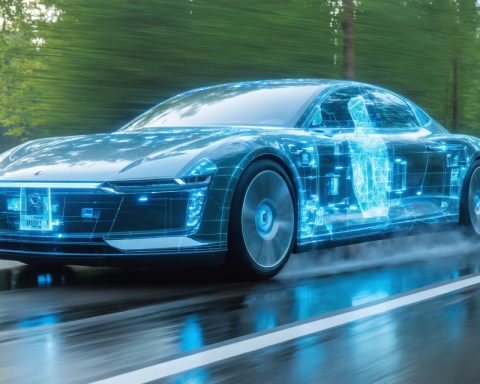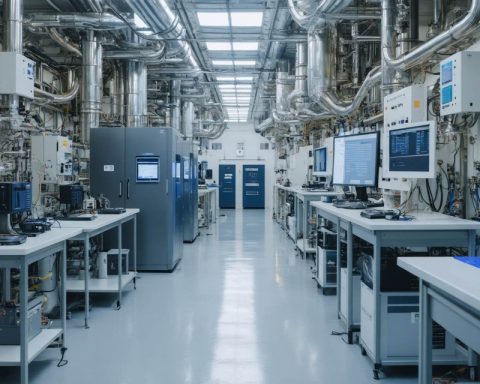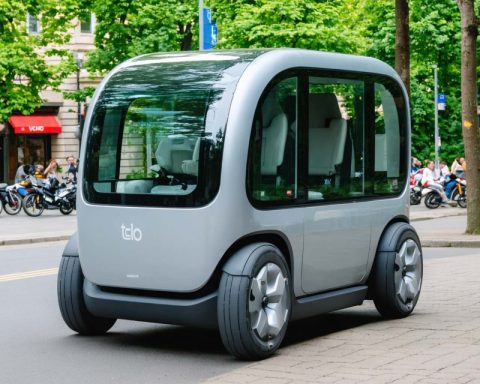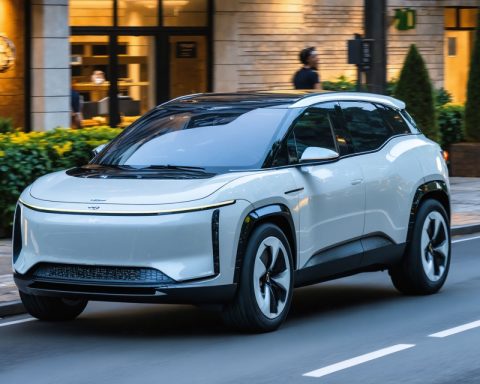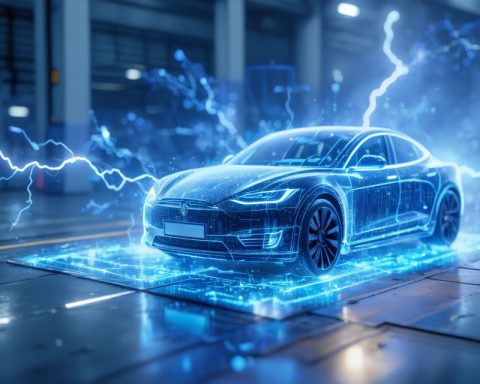- A tragic crash involving Xiaomi’s SU7 electric sedan highlighted the limitations of autonomous driving technology, resulting in three fatalities.
- The incident underscores the risks of Xiaomi’s rapid expansion into the electric vehicle market, diverging from its smartphone roots.
- Xiaomi’s stock suffered a significant blow, dropping nearly 9% after the incident, reflecting investor concerns.
- The crash occurred despite China’s push to lead in autonomous driving technology, showcasing the technology’s current vulnerabilities.
- Xiaomi CEO Lei Jun publicly acknowledged the incident’s severity, balancing corporate accountability with empathy.
- This event serves as a reminder of the essential role of human oversight in technology, as debates on autonomous driving safety persist.
- The broader narrative emphasizes the need for caution, improvement, and maintaining human involvement in technological advancements.
A moonlit highway in eastern China turned tragic as an advanced technological dream collided with harsh reality. The incident involved one of Xiaomi’s proud innovations, the SU7, a sleek electric sedan that roared down the highway with the promise of intelligent autonomous driving. Its formidable speed, unfortunately, led to a heart-wrenching catastrophe as it veered into a concrete barrier, igniting a firestorm that claimed the lives of three university students.
In a sequence reminiscent of a suspenseful thriller, the car’s intelligent system alerted too late, and a technological marvel could not avert disaster. The SU7, relying on Xiaomi’s NOA assistance, sensed the danger but failed to stop in time. This collision casts a shadow over Xiaomi’s ambitious entry into the fiercely competitive electric vehicle market.
Xiaomi’s leap into automobile manufacturing represents a bold strategy shift, pursuing success beyond its famous smartphones and home electronics. The SU7, boasting a shape akin to the luxurious Porsche Taycan but costing merely a fraction of its competitor, sold over 200,000 units in its debut year. This highlights China’s robust supply chain for electric vehicle components, illustrating how consumer electronics powerhouses can pivot into automotive spaces.
The aftermath of the crash reverberated through financial markets, with Xiaomi’s stock tumbling nearly 9% in Hong Kong trading. This stumble came on the heels of the company’s attempts to raise significant capital—about 42.5 billion HKD—to turbocharge its automotive ambitions.
Meanwhile, Beijing’s government encourages autonomous driving technologies, aiming to establish China as a frontrunner in this burgeoning field. Many local automakers integrate these cutting-edge features into mass-produced vehicles. However, incidents like the one involving the SU7 reveal vulnerabilities that often vanish from public view, cleansed from the digital realm.
In the wake of the tragedy, Xiaomi CEO Lei Jun addressed the public, expressing condolences and accepting scrutiny. He recognized that questions hang in the air, vows not to shirk responsibility, and his words attempt to balance corporate accountability with genuine empathy.
As debates rage over the safety and responsibility of autonomous driving technologies, the incident serves as a sobering reminder—a stark narrative that technology alone cannot replace human vigilance and accountability. The path to the future, where technology harmonizes seamlessly with safety, remains fraught with challenges and learning curves.
Ultimately, Xiaomi’s story isn’t just about one incident but the broader implications of modern technology’s rapid evolution. It is a call for caution and improvement, underlining that in the quest for innovation, the human element must remain steadfast at the helm.
Xiaomi’s SU7 Incident: A Sobering Lesson in Autonomous Driving
Introduction
The tragic accident involving Xiaomi’s SU7 on a moonlit highway in eastern China sheds light on the challenges and risks associated with autonomous vehicle technologies. As Xiaomi ventures into the competitive world of electric vehicles, the incident raises questions about safety, innovation, and the future of autonomous driving.
1. Autonomous Driving Technologies: Current Landscape and Limitations
While autonomous driving technologies have made significant advancements, they still face challenges in real-world applications. The SU7’s reliance on NOA (Navigation on Autopilot) systems emphasizes the need for effective and reliable integration of these technologies.
– Limitations: Autonomous systems are not yet fully capable of handling complex driving scenarios, which can lead to catastrophic outcomes if not monitored. Human intervention is often necessary.
– Controversies: Incidents like this highlight debates about the safety and efficacy of current autonomous driving technologies. Critics argue that over-reliance on technology may lead to complacency and reduce human vigilance.
2. Market Forecasts and Industry Trends
– Growth Trajectory: Despite setbacks, the electric vehicle (EV) market continues to grow rapidly, with China leading the charge in autonomous and electric vehicle development. The country’s robust supply chain facilitates the production of affordable EVs like the SU7.
– Investment Surge: Xiaomi’s investment in automotive innovation, mirrored by others in tech, underscores a broader industry trend of tech companies transitioning into automotive manufacturing.
3. How Autonomous Driving Impacts Consumers
– Safety Protocols: Autonomous vehicles like the SU7 require improved safety features and stricter protocols to ensure consumer protection.
– Insurance Considerations: The shift to autonomous driving may impact insurance models, reflecting changes in liability and risk associated with self-driving technologies.
4. Recommendations and Expert Opinions
– Human Oversight: Experts recommend maintaining active human oversight even as autonomous technologies advance. This could prevent accidents and provide a safety net.
– Continuous Monitoring and Updates: Firms should prioritize software updates that enhance safety and performance. Regular system checks are crucial for maintaining vehicle safety.
5. The Road Ahead for Xiaomi
Xiaomi’s response to the SU7 incident will be critical in restoring consumer confidence. By investing in more rigorous testing and transparent communication regarding its autonomous systems, the company can demonstrate commitment to safety.
– Community Engagement: Building strong ties with the community and consumer base through open channels and accountability is essential.
– Government Regulations: Adhering to evolving regulations and standards can help reassure the public about the safe deployment of autonomous vehicles.
Conclusion
As Xiaomi navigates the aftermath of this tragic incident, the need for a balanced approach to innovation becomes clear. While technology offers unprecedented opportunities, human oversight remains vital in navigating the complexities of autonomous driving. By integrating these lessons, companies can contribute to safer, more reliable autonomous technology.
Actionable Tips
– Stay Informed: Consumers should educate themselves on the capabilities and limitations of autonomous vehicles.
– Active Monitoring: Drivers should remain vigilant even in vehicles with advanced autonomous features.
For more insights into Xiaomi’s product innovations and corporate strategy, visit Mi.

